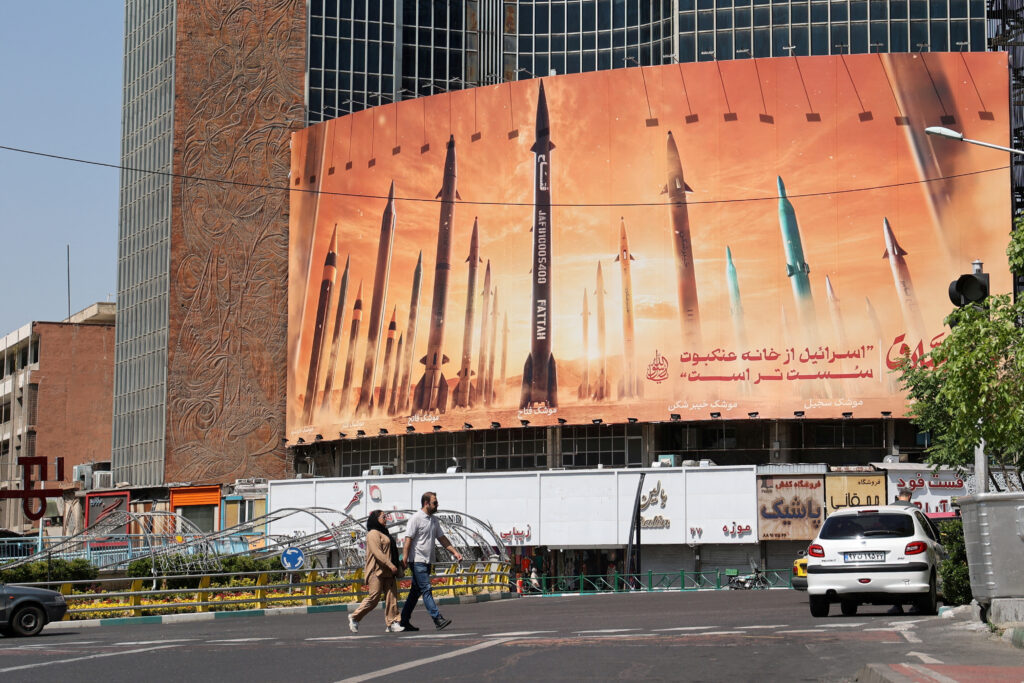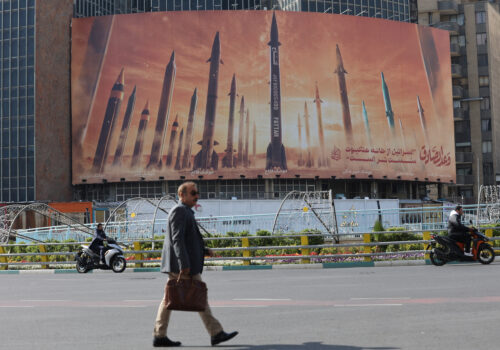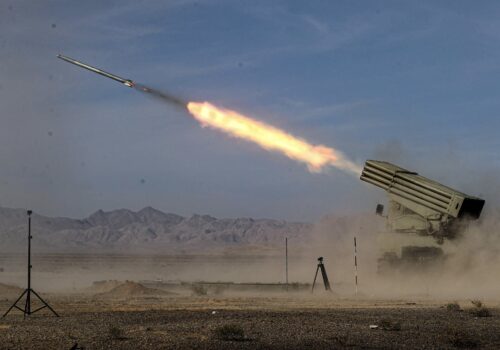GET UP TO SPEED
The volley has been returned. Israel reportedly struck at a military facility in Iran in the early hours of Friday—a response to Iran’s drone-and-missile attack on Israel just days earlier. As the smoke cleared in Isfahan, both Israel and Iran appeared eager to downplay the effects of the strike. With an all-out war hanging in the balance, will these two foes now stand down? Our experts are here to interpret the signals.
TODAY’S EXPERT REACTION BROUGHT TO YOU BY
- Jonathan Panikoff (@jpanikoff): Director of the Scowcroft Middle East Security Initiative at the Atlantic Council’s Middle East Programs and former US deputy national intelligence officer for the Near East
- Shalom Lipner (@shalomlipner): Jerusalem-based nonresident senior fellow in the Middle East Programs and former advisor to seven Israeli prime ministers
- Holly Dagres (@hdagres): Nonresident senior fellow with the Middle East Programs and editor of IranSource
Israel’s calculation
- Israel’s strike was “symmetrical, not proportional,” to Iran’s volley of hundreds of drones and missiles, Jonathan tells us. It was designed to display that Israel can hit inside Iran “but can do so with far fewer weapons due to its superior technical capabilities.”
- Given the size and unprecedented nature of Iran’s attack, Israel could not afford to let it go, Shalom tells us. But its response was “surgical,” and Israel importantly kept the Biden administration in the loop, reflecting “a balance between the imperative to project strength and the desire, simultaneously, to maintain the support of its allies in countering Iran’s aggressive behavior.”
- What was most important was what Israel didn’t hit: Facilities Iran is using to develop a nuclear weapon. That, Jonathan says, “would have been escalatory.” Instead, the strike “made clear Israel has the capability to successfully target the Isfahan” uranium conversion facility and nuclear research center.
The view from Iran
- The way Iranian state media covered the affair, it was essentially sending the message: “It’s always sunny here in Isfahan,” Holly says. State media claimed that its air defenses protected an air base there, home to F-14 fighter jets, “an outdated fleet purchased under the shah,” Holly adds.
- Iranian reports also focused on the use of “quadcopters” by the Israelis, Holly notes. It’s unclear whether that was accurate or an attempt to minimize the assault as compared to the hundreds of drones and missiles Iran sent to Israel a few days ago. “If true, these small drones likely were launched from inside Iran,” Holly says, which could be a sign of the involvement of Israeli intelligence agency Mossad and how “Iran is its playground.”
- Iran also quickly restored commercial air traffic, Shalom points out. “Prevailing narratives in both Iran and Israel now allow for each side to claim satisfaction with their exploits and, more importantly, to scale down their posture,” he says.
What’s next
- While this exchange of blows may end here, Shalom notes that we may have entered “a new phase in the conflict, with Iran and Israel shifting gears toward direct engagement on each other’s home court.”
- And this conflict’s “volatility” and “ever-present danger of miscalculation,” Shalom says, “will keep the entire region on edge for the foreseeable future.”
Further reading
Fri, Apr 19, 2024
Experts react: Israel just conducted a limited strike in Iran. Is this the end of the tit for tat?
New Atlanticist By
The strike early Friday near the Isfahan air base and nuclear site is an apparent retaliation against Iran’s attack on Israel on April 13.
Mon, Apr 15, 2024
Iran and the de-escalation myth
Inflection Points Today By Frederick Kempe
It won’t be de-escalation that will save lives after Iran’s unprecedented weekend attack, but a more determined and unmistakable deterrence.
Sun, Apr 14, 2024
Iran is trying to create a new normal with its attack. Here’s how Israel and the US should respond.
New Atlanticist By William F. Wechsler
Tehran is trying to set a precedent that it can attack Israel directly, that it can do so from Iranian soil, and that it can target civilians inside Israel.
Image: FILE PHOTO: An anti-Israel billboard with a picture of Iranian missiles is seen on a street in Tehran, Iran April 19, 2024. Majid Asgaripour/WANA (West Asia News Agency) via REUTERS ATTENTION EDITORS - THIS IMAGE HAS BEEN SUPPLIED BY A THIRD PARTY. ATTENTION EDITORS - THIS PICTURE WAS PROVIDED BY A THIRD PARTY./File Photo



